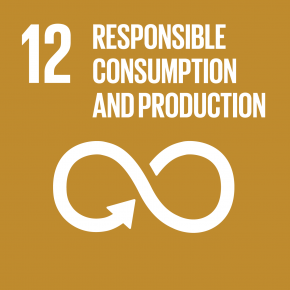|
Title |
Professor |
|
Date of Birth |
1969 |
|
Laboratory Address |
1 Senbaru,Nishihara,Okinawa |
|
|
|
Arakawa Takeshi
|
|
|
Current Affiliation Organization 【 display / non-display 】
-
Duty University of the Ryukyus Tropical Biosphere Research Center Professor
-
Concurrently University of the Ryukyus Graduate School of Medicine Professor
Graduate School 【 display / non-display 】
-
1994.09-1998.06
Loma Linda University Doctor's Course Completed
Academic degree 【 display / non-display 】
-
Loma Linda University - Doctor of Philosophy
External Career 【 display / non-display 】
-
1900
University of the Ryukyus, Tropical Biosphere Research Center, Associate Professor
-
1900.01
University of the Ryukyus
-
1900.01
University of the Ryukyus,
-
2016.10
Jectas Innovators Company Limited
Affiliated academic organizations 【 display / non-display 】
-
JAPANESE SOCIETY OF TROPICAL MEDICINE
-
THE JAPANESE SOCIETY FOR VACCINOLOGY
-
THE JAPANESE SOCIETY FOR VIROLOGY
Research Interests 【 display / non-display 】
-
分子ワクチン学,感染防御学
-
Vaccine development against infectious diseases of animals and fishes
Research Areas 【 display / non-display 】
-
Life Science / Immunology
-
Nanotechnology/Materials / Chemistry and chemical methodology of biomolecules
-
Vaccine development against infectious diseases of fishes
Published Papers 【 display / non-display 】
-
Yukihiro Tamaki , Tetsuya Harakuni
Vaccine ( Elsevier ) 42 ( 7 ) 1757 - 1767 2024.03 [ Peer Review Accepted ]
Type of publication: Research paper (scientific journal)
-
Tsubokawa, D; Lee, JM; Hatta, T; Mikami, F; Maruyama, H; Arakawa, T; Kusakabe, T; Tsuji, N
INFECTION GENETICS AND EVOLUTION 75 103964 - 103964 2019.11 [ Peer Review Accepted ]
Type of publication: Research paper (scientific journal)
-
Access this article
-
Search related information
-
-
CD11 c-specific bio-nanocapsule enhances vaccine immunogenicity by targeting immune cells
Matsuo, H; Somiya, M; Iijima, M; Arakawa, T; Kuroda, S
JOURNAL OF NANOBIOTECHNOLOGY ( Journal of Nanobiotechnology ) 16 ( 1 ) 59 2018.08 [ Peer Review Accepted ]
Type of publication: Research paper (scientific journal)
-
Access this article
-
Search related information
-
-
Harakuni, T; Andoh, K; Sakamoto, R; Tamaki, Y; Miyata, T; Uefuji, H; Yamazaki, K; Arakawa, T
VACCINE ( ELSEVIER SCI LTD ) 34 ( 27 ) 3184 - 3190 2016.06 [ Peer Review Accepted ]
Type of publication: Research paper (scientific journal)
-
Access this article
-
Search related information
-
-
Tamaki, Y; Harakuni, T; Yamaguchi, R; Miyata, T; Arakawa, T
VACCINE ( Vaccine ) 34 ( 10 ) 1268 - 1274 2016.03 [ Peer Review Accepted ]
Type of publication: Research paper (scientific journal)
-
Access this article
-
Search related information
-
Other Papers 【 display / non-display 】
Industrial Property 【 display / non-display 】
-
Porcine circovirus 2 VLP vaccine
Industrial Property No PCT/JP2020/024491 (2019.08.20)
Grant-in-Aid for Scientific Research 【 display / non-display 】
-
Grant-in-Aid for Scientific Research(B)
Project Year: 2021.04 - 2025.03
Direct: 13,200,000 (YEN) Overheads: 17,160,000 (YEN) Total: 3,960,000 (YEN)
-
Grant-in-Aid for Scientific Research(C)
Project Year: 2021.04 - 2024.03
Direct: 3,200,000 (YEN) Overheads: 4,160,000 (YEN) Total: 960,000 (YEN)
-
Studies on development of the Babesia parasites that express cytokine for non-specific immune activation
Challenging research (sprout)
Project Year: 2018.06 - 2020.03
Investigator(s): KAWAZU Shin-ichiro
Direct: 4,800,000 (YEN) Overheads: 6,240,000 (YEN) Total: 1,440,000 (YEN)
-
Recombinant toxoid vaccine development against Shiga toxin type 2
Grant-in-Aid for Scientific Research(C)
Project Year: 2018.04 - 2021.03
Investigator(s): Arakawa Takeshi
Direct: 3,400,000 (YEN) Overheads: 4,420,000 (YEN) Total: 1,020,000 (YEN)
Social Activity 【 display / non-display 】
-
NIAC
2022.06



-
2011.10
-
2024.04
-
2023.04
-
2015.10





